Before the coronavirus pandemic, my partner and I would travel most weekends hoping to visit all 44 European countries. We often predicted that our days of cheap flights were numbered, but we didn’t expect the shift to be quite so abrupt. I’ve put together this list of my top 5 literary cities in Europe as a little reflection of my favorite literary spots found during our travels. I look forward to finding more in the future, and if anyone has any hidden gems, please feel free to share them in the comments!
Dresden, Germany
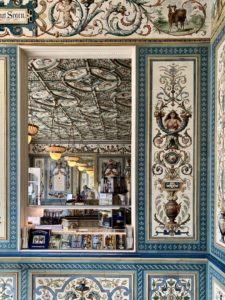
Despite Dresden’s controversial reputation, it has a lot of my favorite hidden spots. The most notable and difficult to find is the 8th century Dresden Maya Codex, the oldest surviving book from the Americas. During World War II, the Codex suffered from water damage and is now located in the Saxon State and University Library Dresden (SLUB). The historical texts accompanying the Codex in the treasures room, including Martin Luther’s handwritten first lecture and a 12th century, miniature copy of the Koran, are also well worth the visit. The room is on a private floor and kept under lock and key, so visitors must request access at the front desk.
The city has also influenced a variety of writers and artists, including Kurt Vonnegut, who was interned as a prisoner of war in Dresden during World War II. He drew on his experiences in Dresden to write Slaughterhouse-Five, and after the war, he returned to conduct further research on a Guggenheim Fellowship. For Wes Anderson fans, a lot of the scenes from The Grand Budapest Hotel were shot in Dresden, including the famous Mendl’s pastry shop, known as Pfunds Molkerei.
Dublin, Ireland
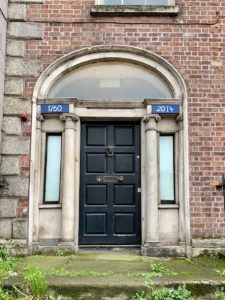
Unlike many of the other literary cities on this list, Dublin is a literary artifact in and of itself. Although there are many formal establishments to visit for James Joyce fans, simply wandering the city’s streets is truly an embodied experience in its own right. Since Joyce often included street names and locations in his writings, many of the houses and corner shops can be visited in person. His former aunts’ house on Usher’s Island is believed to be the setting of the dinner party in “The Dead.” The house now lies abandoned, and readers could easily pass the spot without realizing its significance.
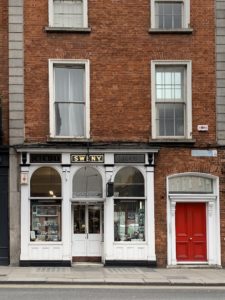
One of my favorites is Sweny’s Pharmacy off of Lincoln Street, which also sits cater-corner to Oscar Wilde’s childhood home. In Ulysses, Leopold Bloom stops into Sweny’s to pick up his wife’s face cream and a bar of lemon soap. Today, the shop is an overly stuffed secondhand bookshop that does daily readings from Ulysses, and the staff appears equally as excited as tourists to interact with fellow Joyce fans. When we stopped in, the shopkeeper was just closing up for lunch but stopped to chat with us on the street before inviting us for a beer. Joyce may have loathed Dublin, but he continues to bring like-minded fans together in its streets.
Vilnius, Lithuania
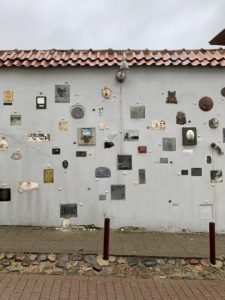
The Lithuanian capital city ended up being full of wonderful surprises. My favorite being Literatų Gatvė, or Literature Street, in the Old Town of Vilnius. The buildings along the pedestrian street are covered in over 200 plagues that are dedicated to writers who have a connection with Vilnius. Most of the writers are Lithuanian, but some are international authors who spent time in or wrote about the city. Jonathan Franzen even made it onto the wall for his novel The Corrections. However, even if you aren’t familiar with most of the writers, the street is still well worth the visit. Each plague is its own little piece of art; some contain an image of the author or a quote, while others are abstract and can only be fully understood by avid readers of the writer. The cherry on top is the excellent, little bagel café just off of the street called Beigelistai. The bagel was one of the best I’ve had in Europe, and the staff was super friendly.
Edinburgh, Scotland
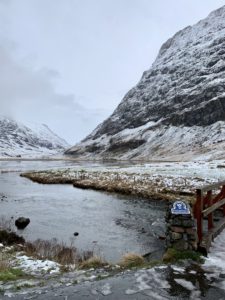
Edinburgh is one of my favorite cities in Europe, largely because of its literary history. Like Dublin, you can’t get a beer without bumping into a historical spot where some literary giant frequented. Tributes to Williams Wordsworth, Robert Burns and Sir Walter Scott can be found throughout the city. Many of the pubs have plagues at the entrance with a little historical run down. One of the most notable locales is The White Hart Inn, where Robert Burns lodged while visiting his lover, Nancy Macklehose. His stay inspired him to write the love song “Ae Fond Kiss.” Today, the interior wooden beams at The White Hart Inn are covered with Robert Burns’ poetry.
Ultimately, however, what makes visiting Edinburgh such an exciting literary experience is the locals. We had the opportunity to do a day drive outside of the city with Hamish, a 60+ Edinburgher. One of the most underrated authors, George MacDonald, was a mentor to C.S. Lewis and Lewis Carroll and a descendent of the MacDonalds from Glen Coe. I was, therefore, interested in learning more about the Massacre of Glencoe, which nearly destroyed the MacDonald clan in 1692. As we wound around the snowy Highland roads, Hamish quoted poetry when we entered each new valley.
Copenhagen, Denmark
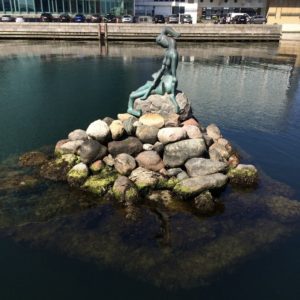
Edvard Eriksen’s statue The Little Mermaid is likely what many first think to see when traveling to Copenhagen. Although it is arguably worth the visit for fans of Hans Christian Andersen’s fairytale of the same name, be warned that it is usually swarmed with tourists. My personal favorite was Bjørn Nørgaard’s version of the statue, The Genetically Modified Little Mermaid, found just a 10-minute walk north of Eriksen’s.
Yet, one of my favorite literary spots in Copenhagen is the Assistens Cemetery. The cemetery itself is a beautiful green space in the center of the city and is full of notable writers, including philosopher Søren Kierkegaard. The site is somewhat difficult to find, due to the cemetery’s size, but the embodied space draws a variety of visitors. I spent the better part of an hour reading on a bench situated in front of Kierkegaard’s headstone while a young man laid across the grave on his back looking skyward.
Next literary cities are Prague, Oslo, Riga, Florence and, of course, London!
